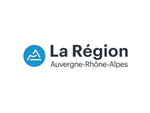An In-Depth Exploration of Corsica, the Island of Beauty

per person (private tour)
Coming from mainland France (Paris, Lyon, Toulouse…) or another Southern country of Europe, you are likely to land in Ajaccio, the small « capital » of Corsica and one of the two only international airports of the island with Bastia.
You pick up your car at the rental agency located at the airport. Then drive to your hotel, start your romantic getaway and take the rest of the day to relax and « feel » the first vibes of the Island of Beauty. You will quickly notice that the local people are proud of their culture and their insularity!
Ajaccio was founded by the Genoese, at least in its modern form. They built the citadel that still shows today the entrance to the port of Ajaccio. They also gave the city its characteristic aspect of Genoese cities, with narrow and colorful streets which you also find in Bastia, Calvi, or Porto Vecchio. The history of the city took an unexpected turn on August 15, 1769, with the birth of baby Napoleon Bonaparte, who became the emperor of the French and whose fame is still very lively in his hometown. « Cours Napoléon, rue du Roi de Rome, Avenue du Premier Consul, Place Austerlitz… », are all names of places that remind everyone of the meaning of "the imperial city".


WHERE TO STAY

Hotel Napoleon
Visit website

Hôtel San Carlu Citadelle
Visit website

Hôtel Golfe Ajaccio
Visit website
You still have the entire morning or day to visit Ajaccio and its surroundings.
Afternoon, hit the road to Sartène (approx. 80km / 2 hours if no stops). Rest of the day at leisure to visit Sartene on your own.
With its grey granite houses, secretive dead-end alleys, and somber, introspective air, the hill village of Sartène has long been renowned for encapsulating Corsica’s rugged spirit. To French novelist Prosper Mérimée, this was the "most Corsican of Corsican towns”. Even if the banditry and bloody vendettas for which it was formerly notorious now lie firmly in the past, Sartène continues to offer an authentic glimpse of how life used to be in rural Corsica.
During Holy Week (mid-April) in the steep streets of Sartène, the procession of the "Catenacciu"(“the chained”) takes place. This well-known religious event dates from the 13th century and seems to defy time: the penitent, feet in chains (weighing 17kg!) carry a cross of solid oak weighing 37kg, and make a 1.8-km journey through the city. Each alley and path taken corresponds to a specific step of the way of the cross of Christ.
Day at leisure to explore Sartène and its surroundings.
The first thing that strikes you as you arrive in Sartene is how the tall buildings, in the same rock as the steep hill on which they stand, look almost unnaturally solid and part of the landscape.
The center of Sartène, and the starting point for your visit, is around the Place de la Liberation, previously and commonly still known as Place Porta. This is a pleasant square containing shady trees and with nice views across the valley. The old Governor's Palace is also in the square although the guillotine that also once found service in the Place has given way to tourists! Sainte Marie church, with its characteristic Corsican bell tower, is also on the edge of the square.
Enjoy a rest in one of the cafes of the Place Porta then descend into the fascinating old town of Santa Anna spread out down the hill below, with its narrow streets crammed with an incredible medley of tall ancient houses, linked by arches, arcades, and alleys, and sometimes blocked by unexpected rocks.
Sartène is often used as a base for visiting the prehistoric sites of Corsica at Cauria and Palaggiu, with their fine dolmen and menhirs, and the standing men stone carvings at Stantari.
Take the road to the South. Make a stop at the famous beach of Roccapina, where the sea spray, the wind and the rain have shaped the pink granite, creating a monumental promontory depicting a lion lying and facing the Mediterranean turquoise waters. This granite beast is recognized as the guardian of the Genoese tower of Roccapina….and the eponymous beach is a beautiful sandy beach with pristine water.
You arrive in Bonifacio in the afternoon.
Thanks to its stunning natural setting, the ancient fortress town of Bonifacio is an essential stop for all visitors to Corsica. Protected by vast smooth walls, the town itself stretches along a narrow, top-heavy promontory, undercut by creamy-white limestone cliffs hollowed out by centuries of ceaseless waves. Down below, connected by steep footpaths and a single winding road, and lapped by cornflower-blue waters, its harbor and modern marina shelters at the landward end of a snaking fjord-like inlet.
Rest of the day at leisure to visit Bonifacio.
Day at leisure in Bonifacio.
Our suggestions:
• There are various other notable sites to see in Bonifacio, including the « Staircase of the King of Aragon ».
• Explore the citadel walls and ancient houses of Bonifacio's old town, with its interesting churches, narrow streets full of shops and cafés and fabulous views from the ramparts. See the « grain de sable », a massive outcrop of the limestone cliff that's fallen into the sea, which is the subject of thousands of postcards. You can see this by looking over the wall at the top of the hill in the old town.
• Witness superb views from the clifftop walk.
• Walk along the cliffs of Bonifacio to the Pertusato lighthouse, and admire the stunning views back towards the town and out over the Straits towards Sardinia.
• Take a day cruise to the Lavezzi Islands: a real paradise during your romantic getaway!
You make a short drive to Porto-Vecchio which is only 30 kilometers away. While Bonifacio’s attractions are mainly related to history, architecture and dramatic landscapes with cliffs and rocks, Porto Vecchio is renowned for its paradisiac beaches like the Palombaggia or Santa Giulia or Saint Cyprien beaches that offer very secure swimming conditions with soft sandy slopes and transparent waters.
Shamelessly seductive, fashionably alluring, Porto-Vecchio has been dubbed the Corsican St-Tropez. The kind of summer resort that entices French A-listers and wealthy tourists, it’s split between the ancient core, aloof on a hilltop, the modern marina in the marvelous bay below and enough urban sprawl across the inland plain to mean it's now Corsica’s third most populous town. The old town’s picturesque backstreets, lined with restaurants and designer shops, have charm in spades, and are presided over by the ruined vestiges of an old Genoese citadel. Although there’s no beach in Porto-Vecchio itself, some of Corsica’s finest beaches are close by.
It’s now time to relax and take a dip in the Mediterranean.


WHERE TO STAY

Hôtel le Tilbury
Visit website

Hôtel Costa Salina
Visit website

Hôtel Don Cesar
Visit website
Day at leisure in Porto Vecchio.
Our suggestions:
• Go to the beach: the beaches of Porto-Vecchio are endless, and the two most popular are Palombaggia and Santa Giulia. Palombaggia Beach is one of the top 10 beaches in Europe, and here you’ll find various bars and restaurants, water sports, sea excursions, and of course, spectacular landscape.
• Explore some megalithic castle ruins:
The Castellu d'Araggio is one of two prehistoric megalithic sites of castle/fortress ruins.
• Don't forget other outdoor recreation:
There’s also canyoning, rock climbing, horseback riding, hiking, biking tours, and ATV/buggy rentals.
• A memorable experience with horses:
Come and make your dream come blue! Once you’ve met your personal mount, you start the ride between the sea and the « maquis », the typical Corsican vegetation where only your guide can find the way without getting lost.


WHERE TO STAY

Hôtel le Tilbury
Visit website

Hôtel Costa Salina
Visit website

Hôtel Don Cesar
Visit website
Self-drive to Corte through the Bavella pass (approx. 150 km/3 hours without stops).
The Bavella needles dominate the pass of the same name, connecting the Alta Rocca. The massif is characterized by laminated peaks and large rocky walls.
Or, why not make a stop and go adventuring in one of the numerous Bavella Canyons?
They’re full of crystal waterfalls, with shimmering green pools, rocky cliff sides with caves, forests, and of course, canyons - specifically, the Pulischellu, Purcaraccia, and Vacca canyons.
Arrive in Corte in the afternoon.
Blessed with a stunning natural setting, circled by jagged peaks at the confluence of several rivers, the mountain stronghold of Corte is really spectacular. Centering on a towering pinnacle that’s been fortified for over 2000 years, it still stands at the heart of Corsican identity. When Pascal Paoli made it the capital of his short-lived Corsican republic in 1755, most of Corte’s population lived within its hilltop citadel. French invaders devastated the upper town 14 years later, fleeing refugees included Napoléon’s mother, pregnant with the future emperor.
NB: Note that hotels in Corte are simple (nothing more than 3*).
Day at leisure in Corte.
Our suggestion :
• Don't miss the beautiful and preserved Restonica Valley: take the D623 to follow the Valley of Restonica (see the starting point of the D623 marked on the map). You find natural swimming pools and bathing spots in an idyllic environment throughout the D623 which follows the bed of the river. To find the most appreciated spots, trust the number of cars parked along the road! Warning: diving into a river can turn out to be a very dangerous activity. Always test the waters first.
• This area is also a paradise for hikers and trekkers. Going up to the source of the Restonica river, you'll find the departure point for the trekking to the famous lakes of Melo and Capitello. Despite its popularity, the walk up to Lake Melo and Lake Capitello remains one of those itineraries which one must simply do. If you leave early in the morning you’ll manage to escape the consistent flow of hikers and, more importantly, you’ll manage to climb up to Lac de Melo in the cool shade. From here the itinerary steepens and in just 45 minutes leads to the deepest lake in Corsica: steep rock walls plunge 42m deep into the icy waters of Lac de Capitello.
These excursions can also be done with a private driver-guide. Please ask us.
Self-drive to Saint Florent (approx. 80 km / 1 hour).
Saint Florent is a small town on the coast of northern Corsica. It has a very pretty harbor and a small fort. Saint Florent is on the coast, at the bottom of the Western side of the Cape Corse peninsula, opposite to Bastia, which is on the Eastern side. The Cap Corse looks like a finger pointed to the North, at the Northern edge of the island.
The location, on a small promontory in a natural bay on the Mediterranean with a backdrop of mountains, the climate and the nearby beaches and scenery all together make Saint Florent a popular resort and tourist destination. Saint Florent is a small town, needing only a morning to explore unless you get waylaid - as you will! - by the attractive harbor and cafes around the Place des Portes, or pass a long time wishing that you too could pass the summer on one of the expensive yachts moored in the marina.
The streets of the town are active and very pleasant to explore, as much in the evening as the daytime, and there are plenty of places to stop and eat or drink.
Like many of the Corsican towns Saint Florent has a Genoise citadel, built in the 15th century (the town quickly started to develop around the citadel). The citadel is a sturdy round monument that looks out across the gulf below, offering some lovely views. The Cathedral of the Nebbio is the other important historical monument in Saint Florent. It was built in the 12th century on the site of the original Roman town that existed close to where Saint Florent now stands.
Day at leisure in Saint Florent and around.
Our suggestions:
• The Agriates Desert beaches: take a 4x4 shuttle available in St Florent and go to the famous and preserved beaches of Saleccia and Lotu, in the heart of the Desert des Agriates. You can decide to spend the whole day or any time you want on the beaches then take one of the return shuttles at your preferred hour. You can also rent a boat (some are available without a permit) and go there by sea.
• Patrimonio Vineyards: Continue on the road to Cap Corse, passing through the Farinole navy and the cove of Fornali, towards the vineyards of the AOP Patrimonio. Located south of the Cap Corse in the junction of Bastia and Saint-Florent, the village of Patrimonio is an invitation to travel to the most beautiful vineyards of Upper Corsica.
• The villages and churches of the Nebbio: Murato, a picturesque municipality, is the most important village of Nebbio. In the walls are two magnificent churches, that one of San Michele dating from the 12th-century, and that one of the Annunciation with its canvas of the 16th-century.
These excursions can also be done with a private driver-guide. Please ask us.
Day at leisure.
Our suggestion: explore the Cape Corse on your own
• Situated to the north of Bastia and Saint-Florent, Cap Corse is a 40-kilometer-long and 10 km wide promontory, with several attractive fishing villages, much attractive coastline and a couple of good beaches. A ridge of mountains runs down the center of Cap Corse, with Mont Stello, in the center of the peninsula, the highest peak at 1307 meters. The usual way to visit Cap Corse is simply to follow around the coast - up to one side and down the other, with occasional excursions a little way inland to visit the wine-producing villages in the hills. This itinerary provides the best way to enjoy the coast, beaches and small villages, and repeated crossing from side to side is not possible because of the mountains. The two sides, east and west, are quite different in character - to the west of Cap Corse, the mountains reach right to the sea in a much more dramatic fashion than on the gentler east side. There are numerous scenic highlights, small villages and Genoese towers to see en-route around the coast.
This excursion can also be done with a private driver-guide. Please ask us.
End this great loop with a last (but not least!) day on the scenic road from Cape Corse to Ajaccio through Calvi, the Calanques of Piana and Cargèse.
Our suggested stops en route (one day is not enough to visit them all, so you can add a night in the Gulf of Porto if you want to explore this part extensively):
• Nearby the small village of Evisa, admire the beautiful Aitone forest whose immense umbrella pine trees hide wonderful rivers and natural pools.
• Head to the gulf of Porto which is listed as UNESCO World Heritage. Overlooking the Gulf, Ota, a typical village clinging to the mountain is the starting point of the Spelunca gorge trail.
• In the afternoon, you can decide (according to the sea conditions) to make a 3-hour cruise to the wonderful reserve of Scandola, which can be reached only by boat (no road, no walking paths). The Scandola reserve is synonymous with rich marine life and a diversity of species.
• Proceed to the sumptuous Calanques of Piana, when the sun is starting to set, and the lights are magical. Piana creeks offer amazing granite sculptures turning from orange to red by hours. Visit the Genoese watchtower of Porto that offers a small museum dedicated to these buildings and Porto Aquarium which has flora and underwater fauna.
Arrive in Ajaccio at the end of the day.


WHERE TO STAY

Hotel Napoleon
Visit website

Hôtel San Carlu Citadelle
Visit website

Hôtel Golfe Ajaccio
Visit website
On due time, you drive to the airport of Ajaccio and drop off your rental car. Take your flight back to mainland France or Italy and from there take your international flight back home.






























